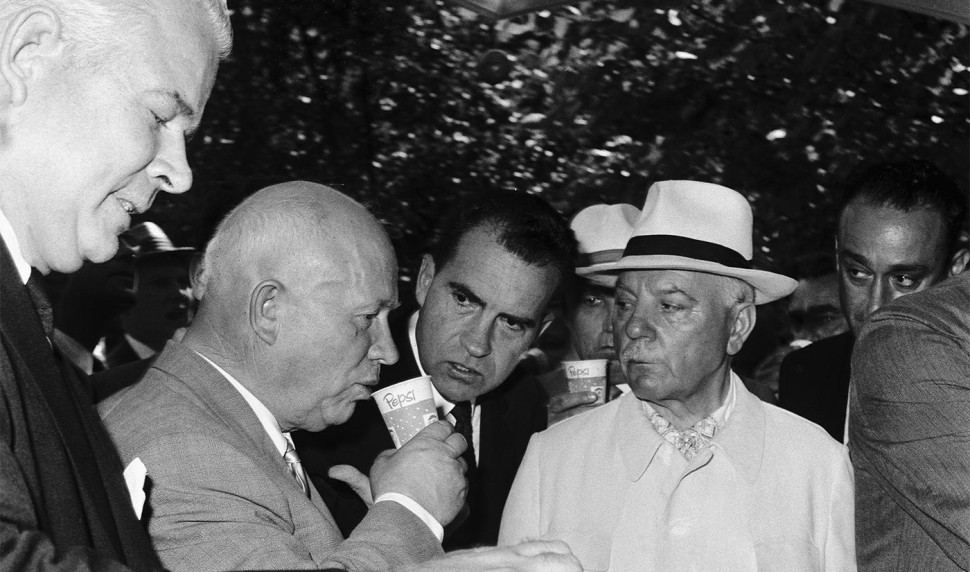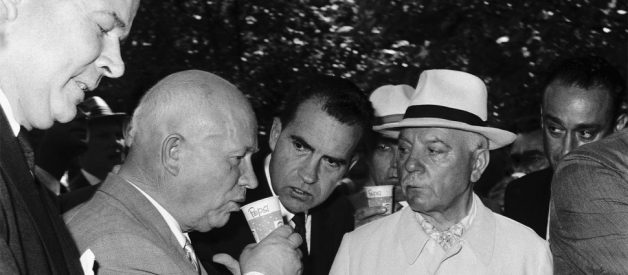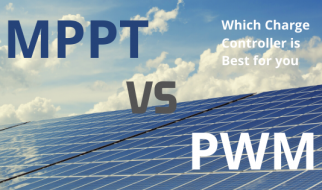 Nikita Khrushchev taking a sip of Pepsi with Pepsi?s future CEO Donald M. Kendell to his right
Nikita Khrushchev taking a sip of Pepsi with Pepsi?s future CEO Donald M. Kendell to his right
The Pepsi and Coca Cola war is an open phenomenon of our generation. A little known fact is that Pepsi itself was capable of making war with a real navy.
End of Cold War:
After an extended period of living inside the Iron Curtain. The USSR came out and shook hands with the USA under the more liberal leadership of Nikita Khrushchev. The change in leadership led to a smooth sailing of the relationship between the superpowers easing the cold war situation.
Nikita Khrushchev was even invited to the USA and visited the White house. The visit let to a showcase of lifestyle between USSR and USA through which Pepsi entered the USSR
The USA-USSR Exhibition:
There was a plan to set up an exhibition showcasing a typical US household. The purpose was that the people in the USSR could have a feel of living in a capitalist country and vice versa. The USA exhibition happened in Moscow, followed by a Soviet show in New York.
The exhibitions happened in the summer of 1959. During the Moscow exhibition, people of the USSR got a rare glimpse of the sophistication of living in a gadget-filled world of capitalism.
Nikita Khrushchev and US Vice President Richard Nixon (R-California) took part in the infamous ?Kitchen Debate.? In this debate, the leaders of the two nations debated the merits of their systems. This exhibition opened up the market of the USSR for US companies like IBM, Disney, etc., and one US company used it well.
Pepsi?s Push:
The night before the event, Pepsi executive and future CEO Donald M. Kendell insisted Richard Nixon make Khrushchev sip Pepsi. After the kitchen debate, Nixon took Khrushchev to a soft drink vending booth and offered the premier a Pepsi. The rest is history. Khrushchev and his associates fell in love with Pepsi, and after negotiations, Pepsi starting exporting its syrup to USSR in 1972 and locked Coca-Cola out of the Soviet market.
Pepsi?s entry into the USSR was a fanfare event with the first company from a capitalist country offering a popular consumer product in the Soviet Union. But Pepsi had its problems.
Pepsi could not accept the Russian Rubble in payment; because its value was controlled by the Soviet government making it difficult to take the Rubble out of the USSR. Pepsi came up with a smart solution, accepting Stolichnaya vodka, in exchange for its syrup. Te vodka exchange went well as Pepsi?s Soviet sales grew for years.
In 1980, the USA boycotted Soviet products, which included vodka because of the USSR?s invasion of Afghanistan. With the US market, not accepting Russian vodka anymore, Pepsi asked for the money it needed differently. In 1989, the Soviet government and Pepsi signed a strange agreement in which Pepsico acted as a middleman to scrap 17 old submarines and three warships.
The navy deal:
The scrapping made lots of money for Pepsi. The USSR scrapped part of its Navy for a bottle of carbonated sugar. And it was mockingly claimed that Pepsi was disarming the USSR faster than the USA. The deal produced enough money to run Pepsi?s Soviet operations for a few years, so a new agreement got reached in 1990.
In 1990 Pepsi came close to making a $300 million deal with the USSR to provide Pepsi until 2000 in exchange for the right to open Pizza Hut restaurants in the Soviet Union. Under the agreement, Pepsi could double its production in the USSR and upgrade its bottling facilities there.
In exchange, the USSR was to build an oil tanker fleet for Pepsi. Pepsico would lease the tankers lease to other companies and get money out of it. The Pepsico deal was the biggest deal ever to be made by a US company with the USSR.
USSR breaking down:
Things went South for Pepsi from there. In 1990, the USSR broke down into smaller countries that seized Pepsico?s assets. The shipbuilding yard was now in Belarus, which demanded money for the tankers. Lithuania, which made mozzarella for Pizza Hut, demanded only US dollars in payment. Meanwhile, Coca Cola jumped into the Russian market, ending Pepsi?s monopoly.
Under the 1989 deal, Pepsi had the sixth-largest navy in the world. Unfortunately, they sold it to sell more carbonated sugar water.
See below for a more detailed version of this story
Source: https://www.atlasobscura.com/articles/soviet-union-pepsi-ships
Youtube:https://www.youtube.com/channel/UCu6Fe1D-UqBBSVcVk0O4n6g/featured?view_as=subscriber
Twitter:https://twitter.com/indianhistoryyn
Website:http://worldhistoryinchunks.com/


